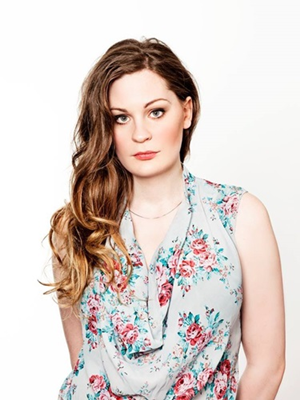Recent boom in number of transgender people in Iceland. Before trans-women dominated by three to one but not any more. Younger also seeking treatment. A more common issue than was previously thought says transgender expert.
“The number of transgender people has grown in Iceland and this is consistent with similar development in other countries,” says dr. Óttar Guðmundsson, psychiatrist and a member of a team of experts focusing on transgender issues at Landspítalinn – The National University Hospital of Iceland. In recent years there has been a rise in number of people seeking gender reassignment surgery. “At the beginning we estimated about two a year but in reality we have seen five to six people every year.”

In addition there has been an increase in trans-men seeking assistance. “It used to be one trans-man (female to male) for every three trans-women (male to female) but now we see that the ratio for those starting their treatment is equal,” says Óttar.
Those seeking treatment are also getting younger. “We see children who have not begun puberty starting treatment and we see young people, in their teens starting treatment and that is something we never saw before,” says Óttar. He thinks the society is more ready to accept these individuals. “The community is much more ready so it is not as difficult as it used to be, to take the step towards treatment.”
The increase is a considerable one. “It is notably more than we expected and it is younger people seeking treatment. It is evident that all the old incidence reports and numbers we counted on were simply wrong, that this is a much more common issue than we expected fifty or even fifteen years ago,” says Óttar.
The team of experts focusing on transgender issues at Landspítalinn – The National University Hospital of Iceland is based on a law on transgender issues, passed by Althingi – the Icelandic parliament in 2012 . The team includes a psychiatrist, two endocrinologists, two psychologists, a speech therapist, occupational therapist and a plastic surgeon.
The treatment is divided in two parts, analysis and therapy. The first part, analysis takes roughly one year and is mostly done by the psychiatrist and the psychologist. The second part, therapy consist primarily of a hormone treatment by an endocrinologist and surgery done by a plastic surgeon and that’s when the individual starts having treatment from a speech therapist and an occupational therapist. According to Óttar the process usually takes two to four years, starting when the individual visits a member of the team for the first time, until the transformation is complete. In some cases the individuals need to continue treatment, such as sessions with psychiatrists or psychologists but according to Óttar those cases are few. In most cases these individuals don’t need any more actual treatment other than hormone control.
“I don’t think that there are more transgender people in Iceland now than before. I rather think that there are more transgender people seeking help now because they have been given the chance to do so,” says Ugla Stefanía Jónsdóttir, chair of Trans-Iceland.

She believes the 2012 law to be very important. “Not only the law itself but also the discussion leading up to it as it opened up a dialogue on trans-politics and gave way for more education on the matter,” says Ugla adding that this has contributed to dramatic changes in people’s understanding of words and concepts in this area. “The dialogue has changed rapidly in Iceland in the last five years or so. Samtökin ‘78 (The National Queer Organization) now include information on transgender issues for the public and people realize they have a choice,” says Ugla who believes that there is a clear connection between the group getting younger and the society speaking more openly about transgender issues.
“At the beginning it was all about trans-women, in Iceland as well as abroad. But now we are not only seeing a rise in numbers of trans-men but also in genderqueer and non-binary trans-people.” These are people who don’t define themselves as men or women. “They too need treatment, hormone treatment and or surgery but the law excludes them as it only mentions men and women. The law does not expect people to be neither or a non-defined individual. Such individuals have not been able to seek treatment,” says Ugla calling for the 2012 laws to be revised. “These laws were an important first step but understandably they were not very radical,” says Ugla adding that the laws are to be discussed by a new parliamentary committee formed in 2014. “These laws are one of the things being discussed at the committee, how we can make them apply to more people, not only trans-women and trans-men but for everyone.”


